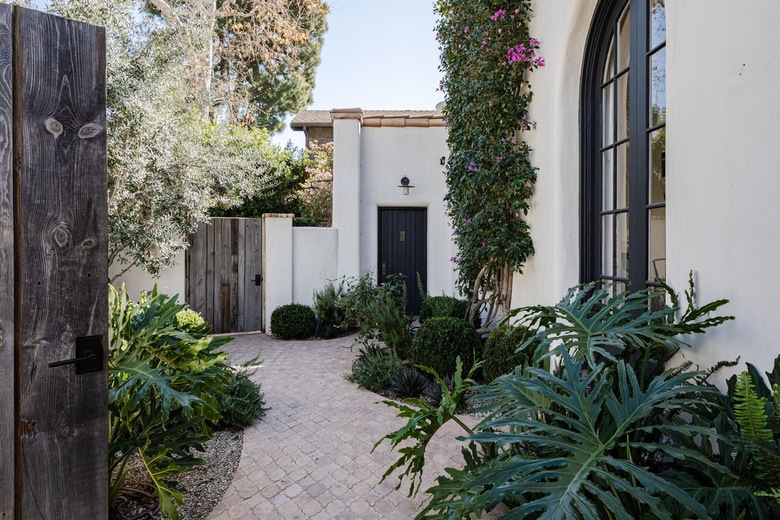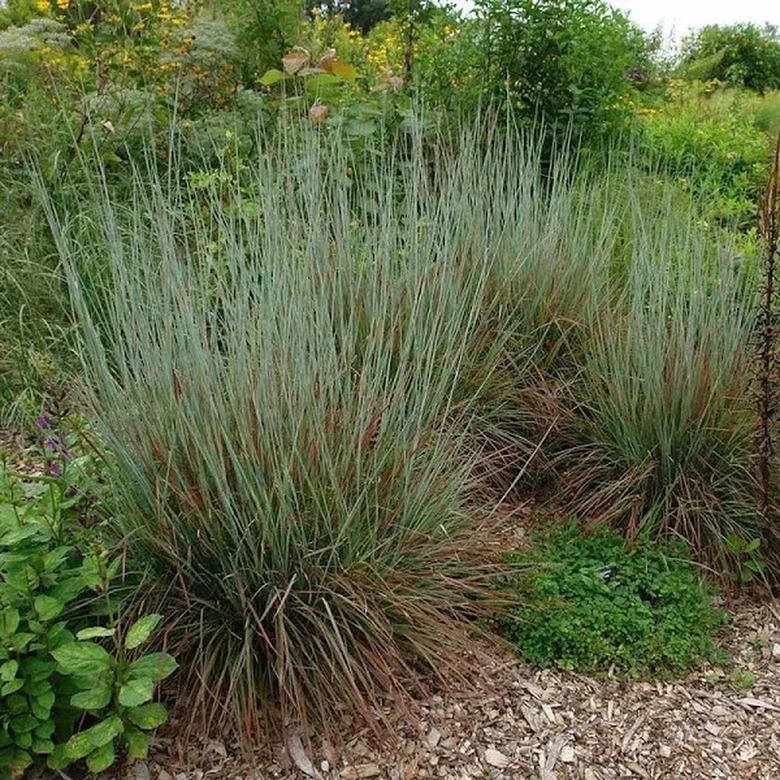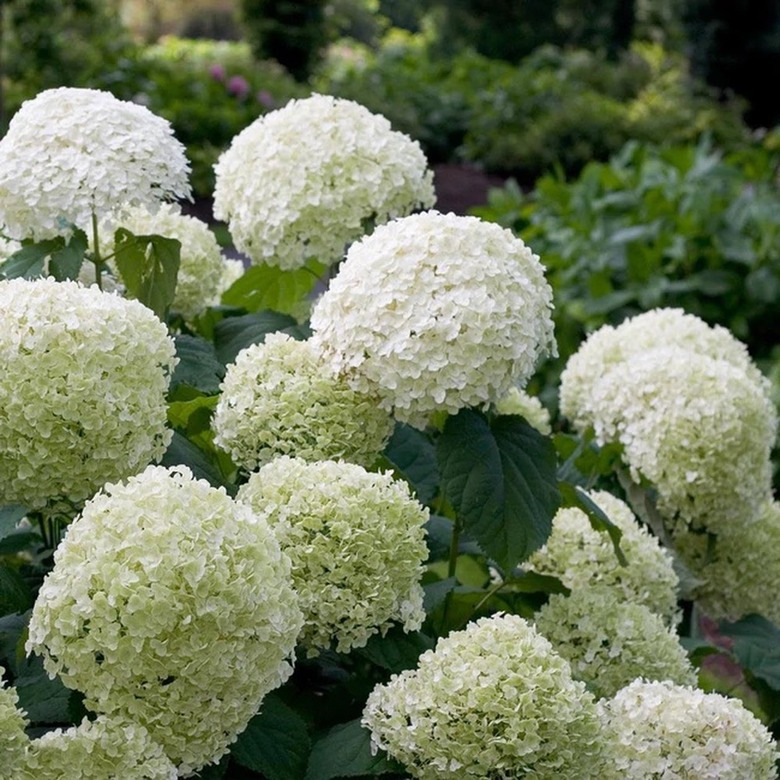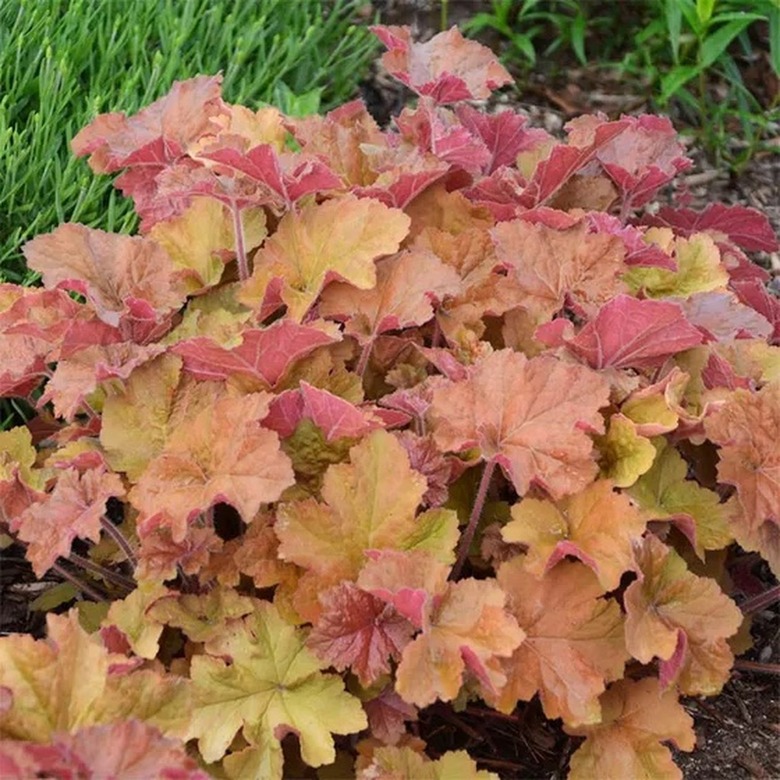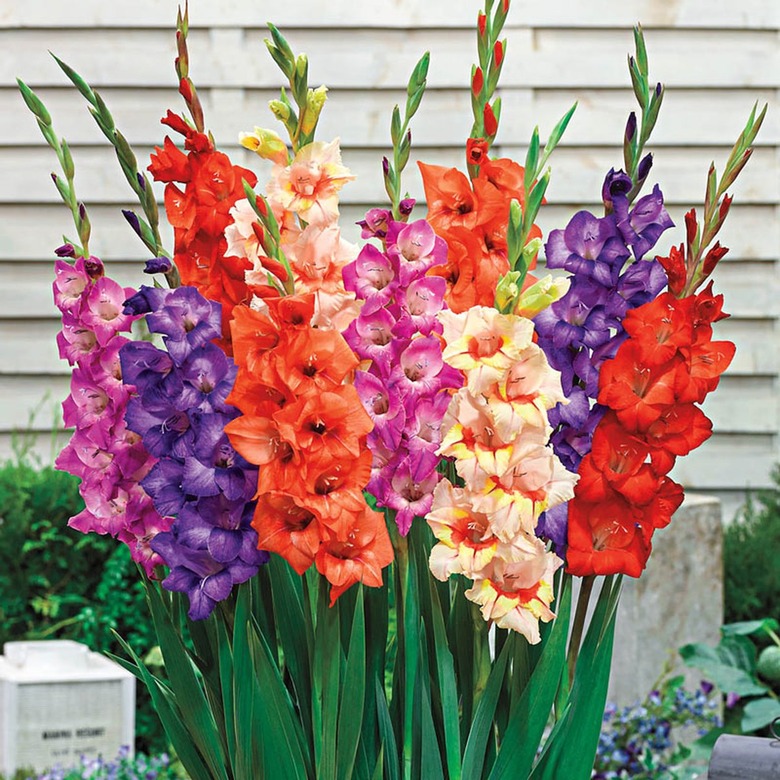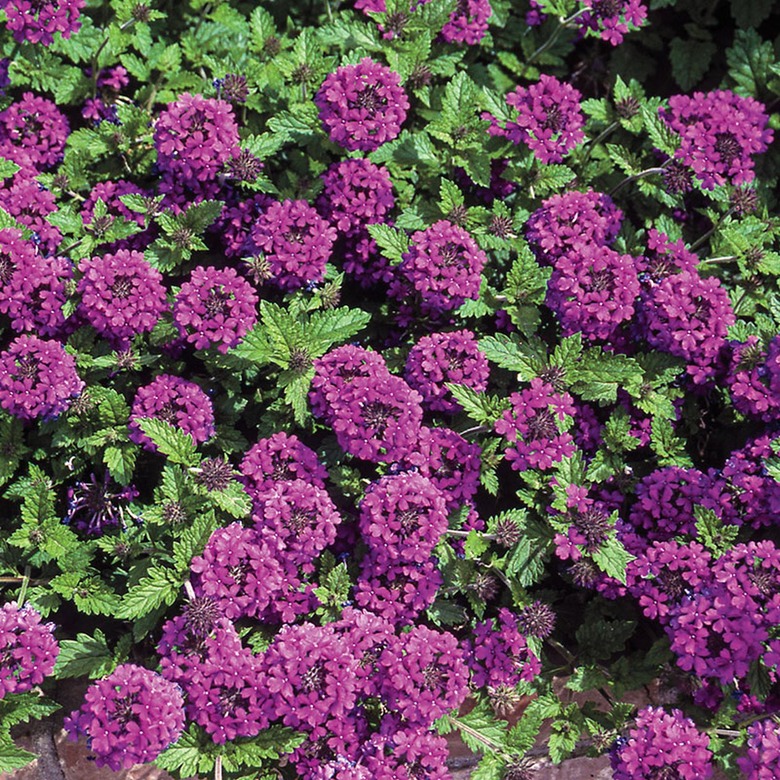I'm A Horticulturist. Here Are The 5 Garden Plants You'll See Everywhere In 2022
Following yearly trends in the green industry allows horticulturists to check the pulse of backyard gardeners, which reveals their plant preferences as reflected in their purchases that drive the market. When considering a host of new plant introductions each year as well as tried-and-true mainstay plants, gardeners inevitably choose some plants in each of these two categories to populate their landscapes. So, it's not surprising that the garden plants you'll see everywhere in 2022 include a delightful mix of old and new selections — all of which would look lovely gracing your garden.
1. Little Bluestem
With its tongue-twister of a scientific name, Schizachyrium scoparium is better known as little bluestem. Chosen as the Perennial Plant of the Year by the Perennial Plant Association, little bluestem checks many boxes as a superior landscape plant. Valued not for its insignificant flowers but for its striking silvery blue-green foliage, this native plant tolerates drought, deer, heat, humidity, and poor soil. Hardy in USDA zones 3 through 9, there are numerous cultivars of the species that perform best in different growing regions.
If you garden in the South, plant the cultivar 'The Blues' to withstand heat, humidity, and wet springs. Grow the cultivar 'Jazz' if you live in the Central region, and look for the cultivar 'Blue Heaven' if you garden in the mid-Atlantic states. For the Great Lakes region, the cultivar 'Carousel' is hard to beat, and the cultivar 'Standing Ovation' grows well in the Pacific Northwest and Rocky Mountain regions.
2. Incrediball Hydrangea
With countless flower shapes and colors, plant forms, and blooming times, hydrangeas have remained a garden favorite for generations. It's perhaps because of their enduring popularity that so many cultivars have been developed. One cold-hardy cultivar that has seen a meteoric rise in popularity is the Incrediball hydrangea (Hydrangea arborescens 'Abetwo,' zones 3-8).
Huge white flowerheads the size of basketballs cover these deciduous shrubs in summer, and if you haven't yet seen this plant you will soon, because it's being grown everywhere. If you want a "wow" plant for your landscape, this one is a winner; in fact, it's the Proven Winners 2022 Landscape Shrub of the Year.
3. Caramel Coral Bells
Although it produces delicate, pinkish, bell-shaped flowers that rise above the leaves on spires, it's the foliage of this plant that commands center stage. Caramel coral bells (Heuchera 'Caramel,' zones 4-8) has lobed, rounded leaves in a delicious shade of buttery caramel that really makes a design statement in the shade garden. Although the plant can tolerate a fair amount of sun, especially in colder regions, it's a stellar choice for the partial-shade garden. With more awards under its belt than most landscape plants, Caramel heuchera's accolades have propelled it from a beautiful introduction in the mid-2000s to a must-have plant that you'll see everywhere in 2022.
4. Gladiolus
Gladiolus plants, also simply called glads (Gladiolus spp., zones 7-10) are a cut-flower garden essential. With sword-shaped foliage and tall, flowering stems that open from bottom to top, glads offer vertical interest in the garden and dramatic accents in any floral vase arrangement. And even though they've been gracing gardens for many generations, they're making such a comeback that the National Garden Bureau has designated 2022 as the Year of the Gladiolus. With numerous species, varieties, and cultivars from which to choose, you'll find glads in colors that include a rainbow of colors to match any garden's color palette.
5. Verbena
What's not to love about a plant that attracts scores of butterflies and hummingbirds to your garden? Commonly grown as an annual, garden verbena (Verbena spp., zones 9-10) is an indefatigable performer that keeps blooming even in oppressive summer heat. You'll also find some cultivars with improved cold hardiness, such as Homestead Purple trailing verbena (Verbena canadensis 'Homestead Purple,' zones 7-10). Other than trailing types, you'll find species and cultivars with tall upright, low-growing compact, mounding, and spreading forms.
